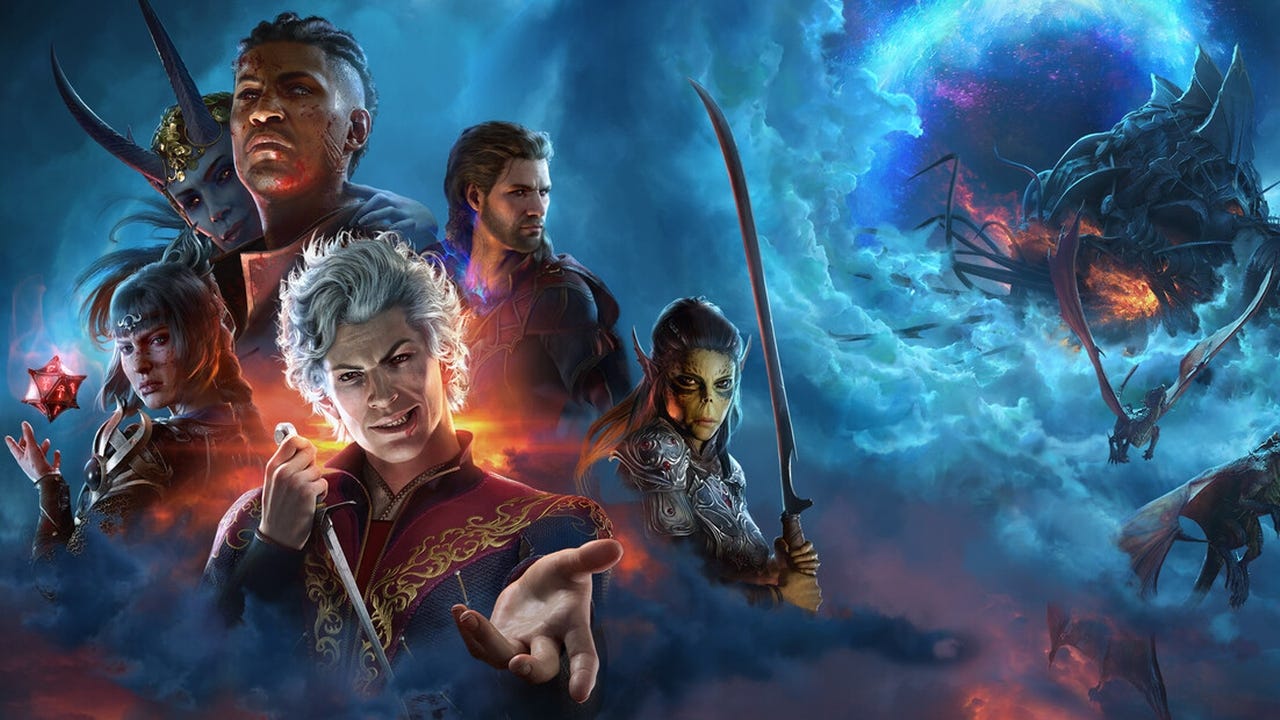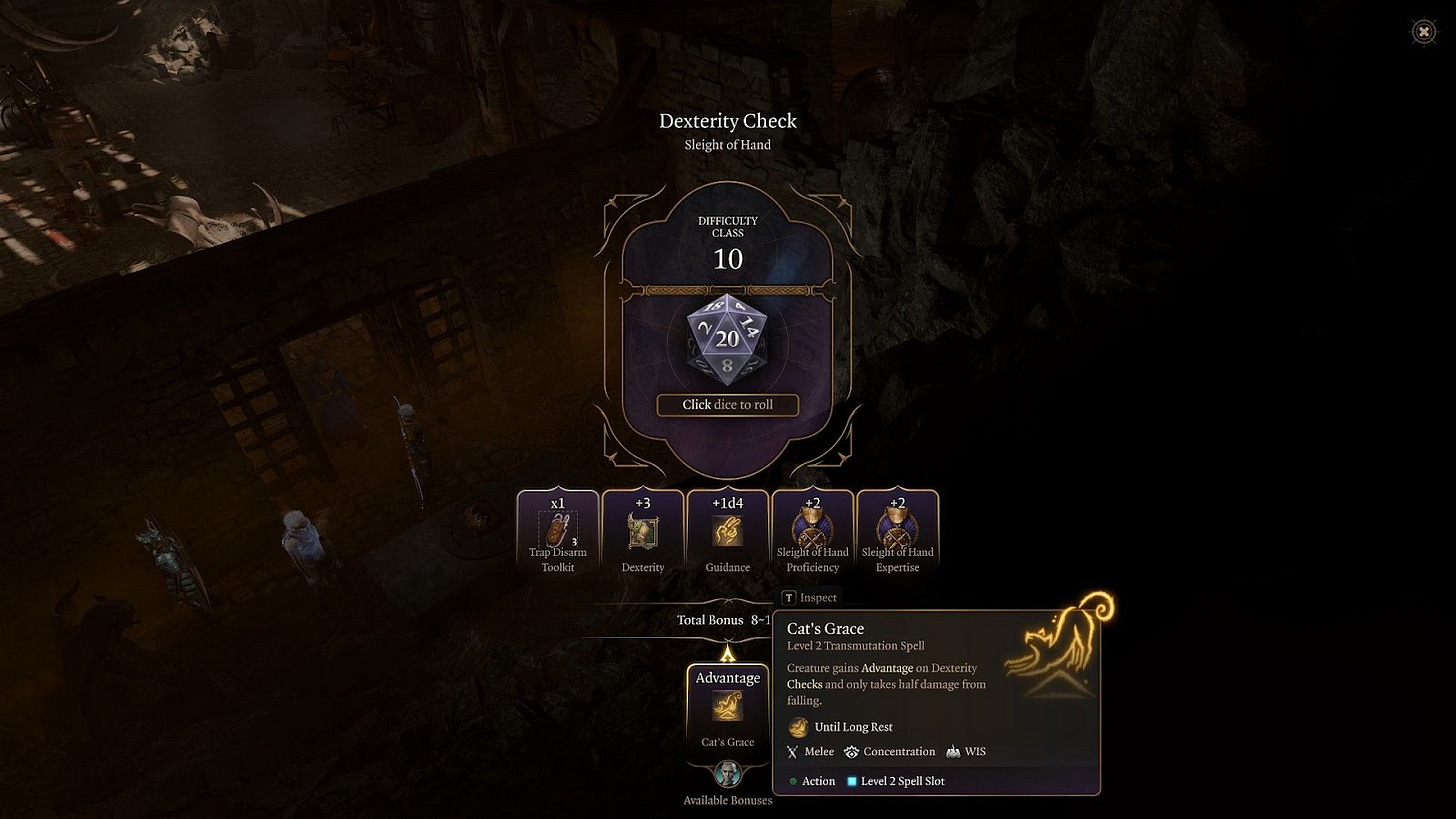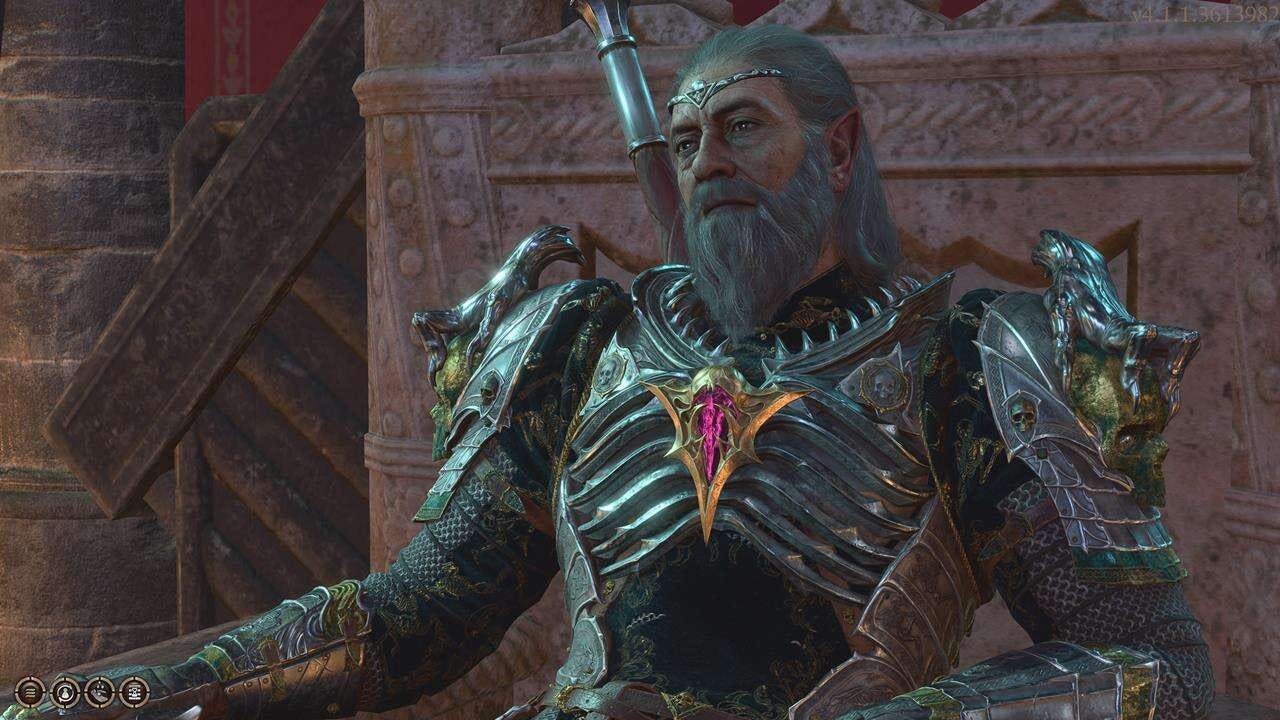A couple months back I finally beat Baldur’s Gate 3, and then quickly beat it again! I have a huge fondness for this game, especially the way it builds on D&D mechanics I’m already really familiar with. A lot of those changes made me completely rethink the ways I’ve been running my TTRPGs, so today I wanted to tell you about 5 different ways BG3 has influenced my TTRPG games, either as a designer, or a GM.
Major spoilers to follow, so go play the game first! See you in 100 hours!
1 - Give Out Bennies Liberally
I really appreciated how quick BG3 was to give out advantage on skill checks. Every now and then you’d get a dialogue option exclusive to your race or class, and frequently the skill checks associated with those options would be with advantage. Other times, an exclusive option might end up skipping a skill check entirely, or even skipping whole fights! For example, the goblin ambush in the Blighted Village is completely avoidable if you’re a drow, since the goblins assume you’re an ally of Minthara.
I also loved how frequently the game gave out inspiration, and the background-related objectives for gaining them always felt personal in a way I really appreciated.
Now, when I run games, I’m always looking for reasons to give my players an upper hand, and, as a player, I’m pushing my luck maybe a little too much asking for bennies from GMs who haven’t quite come around to this idea yet.
2 - Tell the Players the DC
Knowing what you have to roll before making the check is such a nice quality of life feature, and it really ups the stakes for those super important dice rolls. It also makes it easier to know when to use inspiration, which, combined with the changes I talked about earlier, make the inspiration mechanics significantly better than in D&D 5e.
Games where you don’t have variable DCs already do this. Powered by the Apocalypse games make every roll a fail on a 6 or lower, a mixed success on a 7-9, and a full success on a 10+, so you know how well you’ve done as soon as you roll. This can also be seen in D&D with Dimension 20’s Box of Doom, which is the only time where the GM will tell the player upfront what they need to roll.
Knowing whether you succeeded or failed immediately is much more exciting than having to ask the GM, and I especially love how Dimension 20 saves this for its most important and tense rolls. I’ve started adopting this mechanic when I need to emphasise the importance of a particular roll.
3 - Stacks Are Awesome
BG3 adds a whole bunch of new conditions that don’t exist in D&D 5e, and most of these newcomers are stacking conditions, something that only really appears in exhaustion in 5e.
Each of these conditions is tied to a damage type, such as “heat” for fire damage or “frost” for cold. One of my character builds was a monk centred around the “reverberation” condition, connected to thunder damage. Each stack of reverberation applies a -1 penalty to all physical saving throws, and if the stacks reach 5, the creature takes some damage and must make a save vs falling prone.
There was something really satisfying about building up these stacks, especially with the capstone effects when they hit 5. The sound design definitely helped a lot (shout out to the thunder damage SFX), but the mechanics alone are really interesting, and I’d love to incorporate them into my own tactics games. They don’t even seem that difficult to implement into tabletop games, hell, some Powered by the Apocalypse games do a similar thing already with their “hold” mechanic.
4 - Let the PCs Into the Villain’s Lair
One of my favourite parts of exploring in BG3 is being able to go into the villain’s lairs without them immediately becoming aggressive. And this is justified in the narrative! Both Minthara and Ketheric initially believe you to be on their side, and Gortash and Orin are both trying to convince you to kill the other of them, so of course they'd be willing to let you in.
It allows the player to have conversations with the villains and their minions, where they might reveal things they wouldn’t otherwise tell you. It also lets the players parley with the enemy, which can create tense and exciting roleplay scenes! I think this is a big part of the reason I love BG3’s villains so much, especially Ketheric Thorm. You can learn so much about Ketheric by exploring Moonrise Towers and the surrounding Reithwin Town.
5 - It’s Okay to Forget About Loose Ends
And finally, something BG3 taught me by actually doing it poorly. My biggest criticism with this game is how massive and overwhelming Act 3 is. The first time I entered the lower city of Baldur’s Gate, I was completely overwhelmed by all the quests from the previous two acts finally getting their resolutions. Combined with the quests that only start in act 3, it really felt like there was too much to do.
But I did it all, and ended up hitting the max level before doing any of the major fights. So I breezed through Cazador, Raphael, Ansur, Orin and Gortash, and was left a little disappointed by how easy each fight had become.
When it came to my second playthrough, I really wanted to streamline my experience with the story. I only picked up half the companions, and, when I got to Baldur’s Gate, only finished the quests I wanted to. This ended up being a much smoother and more enjoyable experience, since I wasn’t bogged down with plots I wasn’t interested in and characters I hadn’t become that attached too.
All of this is to say, it’s okay to forget about loose ends in your TTRPG campaigns, not everything has to be resolved in a satisfying way. Hell, if the player’s haven’t brought it up in a while, they might have completely forgotten that it even happened.
I’m sure I’m not the only person who’s TTRPG games have been inspired by BG3. If you’ve had any similar ideas, let me know in the comments! Or let me know if you’ll be including any of these techniques in your games in the future!
Thanks for reading! If you liked this post, consider sharing it or checking out more of my posts here!
CJ






